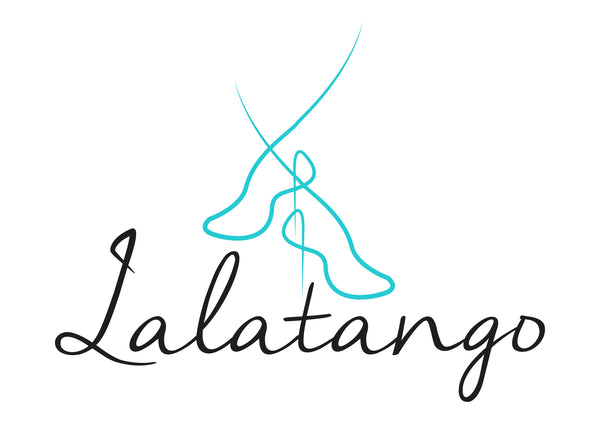Trade secrets
Some manufacturing secrets...
Designed and designed in France, our Argentine tango shoes are handmade in Portugal by a small team of artisans with formidable ancestral know-how, capable of producing exceptional work .
In this article , Puretrend explains that Portugal has become a key player in the high-end footwear industry in recent years.
Lalatango shoes are originally designed for dancing , and in particular for Argentine tango . They meet more demanding criteria than shoes used for "the city".
What are the ingredients of their tremendous success?
Memory foam, an essential innovation to respect your feet and relieve your metatarsals
All our shoes feature patented memory foam that protects your joints by reducing pressure and impact. From high heels to flats and trainers!
Unlike traditional foams which flatten and lose their effectiveness very quickly , our memory foam retains its support and cushioning properties over time.
The part of the foot that suffers the most during a milonga is generally located at the joint between the metatarsal and the phalanges. This is normal, as this part supports all of the body's weight when you pivot. And tango dancers know: the pain can be intense...
To avoid this major inconvenience, your Lalatango shoes (heeled shoes like leader shoes or training shoes) are equipped with several millimeters of an exceptional material, Poron®, an ultra-comfortable foam that CONSIDERABLY reduces the pain caused by hours of practicing Argentine tango.
This material has shape memory, meaning that it supports the pressure of your feet very well without deforming over time (i.e. without "printing" in 3D the imprint of your toes as we so often see on our old shoes), which would cause it to permanently lose its qualities...
Choose quality and protect your metatarsals for a long time to enjoy comfort that does not deteriorate over time!
They represent a significant portion of the price of heels, but they are essential: the croupon leather soles are a guarantee of stability and durability for tango shoes. They are the same as those found in luxury or high-end dress shoe brands. They are perfectly usable for both city and dance.
Suitable for the most demanding dance floors—even outdoors—they allow for optimal control over your pivots and movements. Thanks to them, you can wear your heels on the street as well as on the dance floor. However, it's definitely best to have a pair (or several!) reserved for dancing, so as not to dirty or even damage the milonga floor.
With Lalatango, choose quality!
(1) Croupon is a firm leather from the back of the animal. It is a valuable raw material in the leather industry, valued for its strength and quality.
(3) Split leather, also called suede or buffalo, is made from the inner layer of an animal skin that has been split, which gives it low resistance to abrasion.
Stability but not rigidity
While the stability of heeled shoes allows you to feel comfortable and avoid fatigue, it is still unpleasant to dance in rigid shoes: you lose the feeling of contact with the ground! Conversely, shoes that are too flexible are not stable and can quickly become tiring, even dangerous. It is therefore necessary to find a compromise between flexibility and rigidity.
At Lalatango, the "inner sole" (which is the insole from which the shoe is assembled) of heeled shoes has been reinforced. Only on the part that does not touch the ground, under the arch of the foot: this allows good stability while preserving the flexibility of the sole at the front on the ground!Arch support
The shape of Lalatango heels (the mold around which the shoe is made) is designed to provide optimal arch support. This ensures exceptional comfort for dancing the night away!Full sizes and half sizes
Lalatango offers its tango shoes in full and half sizes.
So, if your feet are a little wide, you just need to choose a half size above your usual size in order to benefit from a greater width without having the feeling of wearing shoes that are too long (which is undoubtedly the case when you have no other choice but to take a size above yours to avoid feeling cramped...).
Likewise, if there is a small difference in size between your two feet, this allows you to choose the size where your larger foot is more comfortable, without the other being too large.
Quality of materials
The uppers of the shoes are made of leather. This isn't just any leather! It's carefully selected for its comfort, aesthetics, and durability. These are essential qualities when you're putting on dancers' feet for hours on the dance floor.
The shoes are always lined; the lining is always made of genuine leather, as is the insole.Your frequently asked questions…
Do you need to have a "pad" (or rubber sole) fitted under your high heels to wear them in the city?
This isn't essential, and we don't recommend it because your shoes would lose their flexibility, which also contributes to comfort. Only do this if you plan on using them intensively on rough ground.
But if it rains, will the leather sole hold up?
Yes.
The leather (rump) of the outsole is thicker and stiffer than that used for the upper of the shoe (= the top). Its manufacture is different. Its tanning takes longer (the leather is then immersed in different baths of aqueous solutions... so it macerates for a long time in water!), it is then compressed.
In short, the sole is also water-resistant. Although it's best to avoid walking for miles in the rain... And remember to dry your shoes thoroughly when they get wet.
